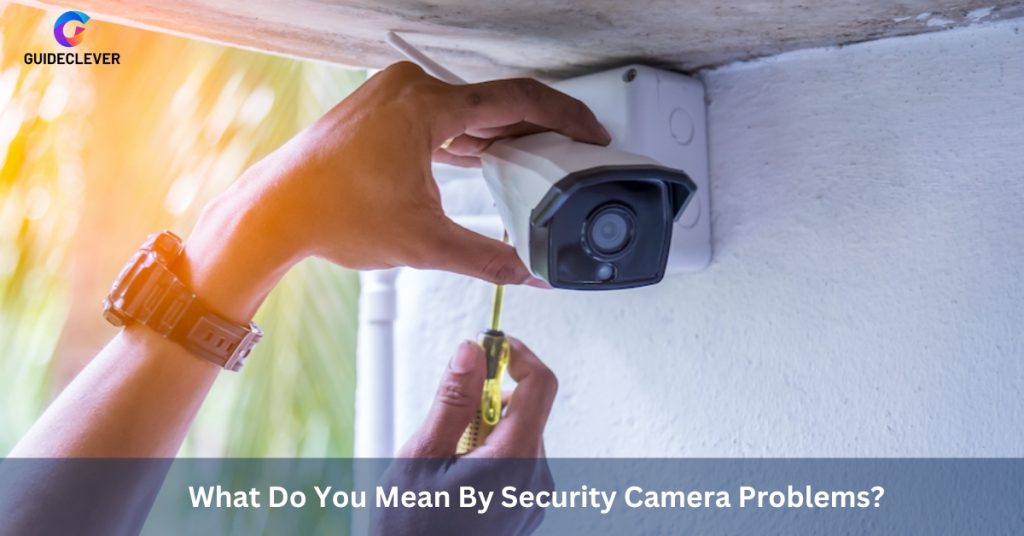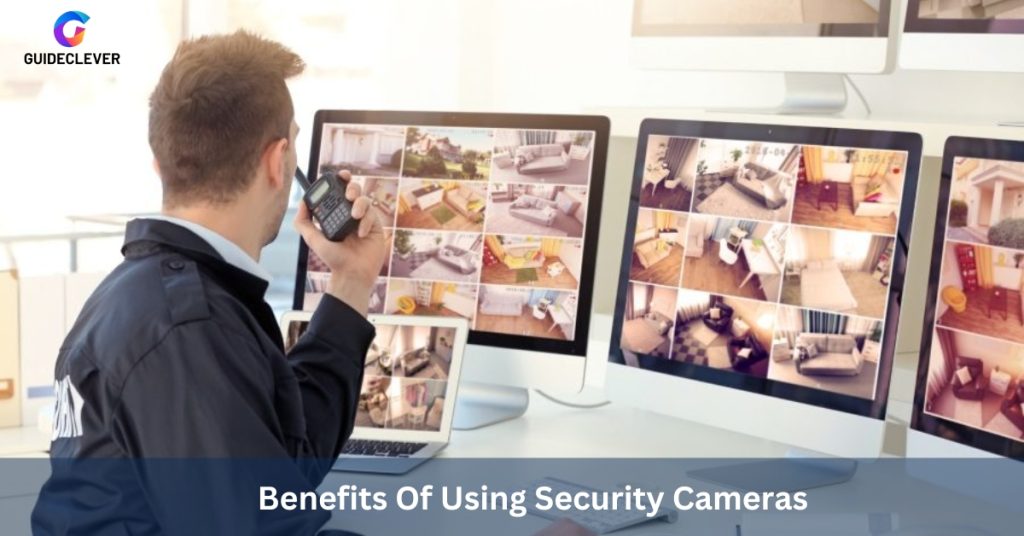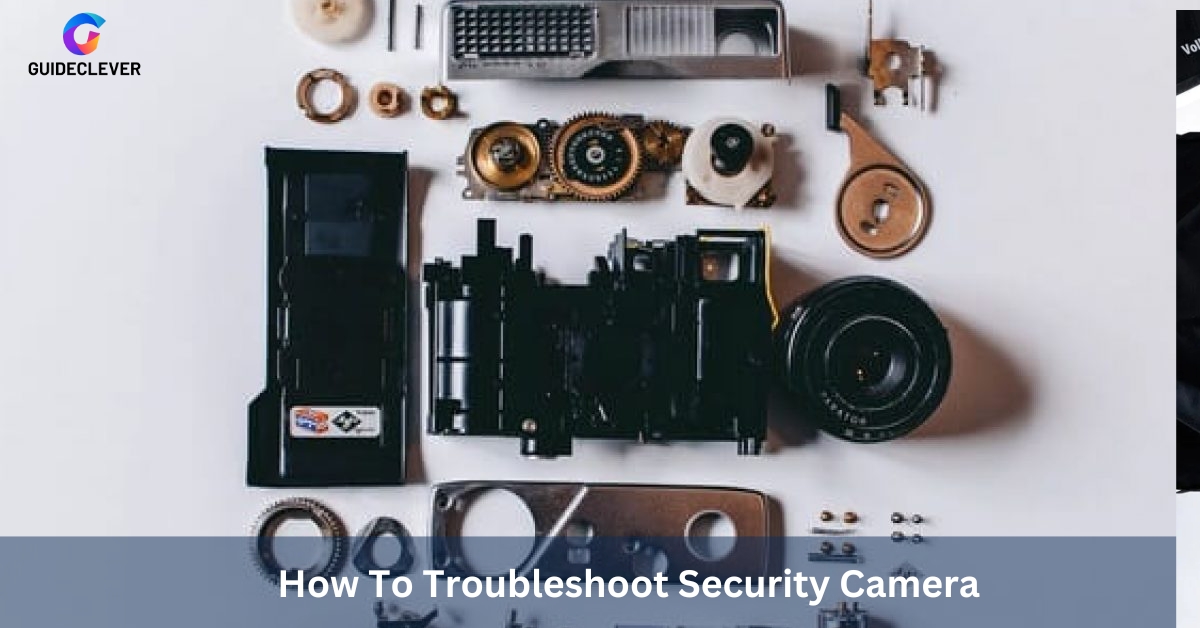Security cameras have become an integral part of home and business security systems. They provide an extra layer of security by capturing video footage. Security cameras can track who is coming and going. They are used to deter thieves or intruders.
Unfortunately, they have to face many problems along with servicing security cameras. Through troubleshooting a Security camera, you can extend the life of your camera.
This article will provide you with ten easy steps to troubleshoot your security camera system. We will also discuss common security camera problems. Finally, explore types of security cameras, their uses & benefits.
Contents
- 1 What Are Security Cameras?
- 2 What Do You Mean By Security Camera Problems?
- 3 10 Steps to Troubleshooting Security Cameras Problems
- 3.1 Check the power supply.
- 3.2 Verify the connections
- 3.3 Restart the camera and recording device.
- 3.4 Check the camera settings.
- 3.5 Inspect the camera lens.
- 3.6 Test the camera in a different location.
- 3.7 Check the camera’s firmware.
- 3.8 Troubleshoot network connectivity
- 3.9 Test with a different device.
- 3.10 Contact technical support
- 4 Types Of Security Cameras
- 5 What Are Security Cameras Used For?
- 6 Benefits Of Using Security Cameras
- 7 FAQ
- 8 Conclusion
What Are Security Cameras?
Security cameras are electronic devices. It captures video or still images of people entering and exiting a space. They usually connect to a DVR, NVR, router, computer. As well as it works other devices for recording and storing the footage. Security cameras may be wired or wireless.
What Do You Mean By Security Camera Problems?

Security camera problems can come in many forms. It may range from failed or distorted image quality. The most common problem is poor video feed quality due to many factors. Security camera problems refer to issues or challenges. It can arise with security cameras’ operation, functionality, or effectiveness. These problems can vary and may include:
- Malfunctioning cameras
- Poor image quality
- Limited field of view
- Inadequate placement
- Insufficient storage
- Connectivity issues
- False alarms
- Vulnerabilities to hacking
- Lack of maintenance
It is essential to address these security camera problems. Ensure the reliable and effective operation of surveillance systems. It enhances the overall security and safety of the monitored area.
10 Steps to Troubleshooting Security Cameras Problems
To troubleshoot a security camera, you can follow these general steps:
Check the power supply.
Ensure that the camera is receiving power. Check the power cables, power outlets, and any power adapters with the camera. If the camera has a power indicator light, ensure it is illuminated.
Verify the connections
Check the cables and connectors between the camera. Also, check the recording device or monitor. Ensure they are securely connected and not damaged. If you’re using IP cameras, ensure they are connect to the network correctly.
Restart the camera and recording device.
Sometimes a straightforward restart will fix connectivity or software problems. Turn off the camera and the recording device or monitor, wait for a few seconds, and then turn them back on.
Check the camera settings.
Ensure that the camera settings are configured correctly. Verify the resolution, frame rate, motion detection settings, and other relevant settings. Make sure the camera is not in privacy mode, if applicable.
Inspect the camera lens.
Clean the camera lens with a soft, lint-free cloth. Image quality might be impact by lens smudges, grime, or dust. Additionally, look for any actual obstacles that may be obstructing the camera’s vision.
Test the camera in a different location.
Test the camera in a different position to determine if it operates there by moving it. This helps identify the issue with the camera or the specific installation site.
Check the camera’s firmware.
Make sure the camera is running the most recent firmware. Browse the manufacturer’s website to see whether your camera model has any firmware upgrades. If the firmware has to be updated, follow the instructions.
Troubleshoot network connectivity
If you’re using IP cameras, check the network connection. Ensure the camera is correctly connect to the network. As well as, there are no network issues affecting its communication. Verify IP addresses and network settings, and try pinging the camera’s IP address.
Test with a different device.
Connect the camera to a different recording device or monitor to rule out any issues with the original machine.
Contact technical support
If you have tried all the above steps and the camera still isn’t functioning correctly. Contact the manufacturer’s technical support for further assistance. They may provide specific
Remember, the troubleshooting steps may vary depending on the camera brand and model. Then, consult the camera’s user manual or manufacturer’s website for more specific instructions.
Types Of Security Cameras

Here are some of the most common types of security cameras:
Dome Cameras
Dome cameras are named after their dome-shaped housing. It is use for indoor surveillance. They have a wide-angle view and are often vandal-resistant.
Bullet Cameras
The cylindrical-shaped bullet cameras can be used both indoors and outside. They are easy to install and can be mounted on walls or ceilings.
PTZ Cameras
PTZ stands for Pan-Tilt-Zoom. To capture a variety of angles, these cameras may be remotely operate to pan, tilt, and zoom. They are commonly use in large areas where active monitoring is required.
Wireless Cameras
Wireless cameras transmit video and audio signals without the need for cables. They offer installation flexibility and are suitable for areas where wiring is complex.
Thermal Cameras
Heat signatures are used by thermal cameras to identify persons and things. They are useful for seeing intruders in pitch-black situations or in low light.
IP Cameras
Digital cameras that transfer data across a network are known as IP cameras. They can accesses remotely.
Outdoor Cameras
Outdoor cameras are make to endure a range of weather. They typically resist the elements.
Hidden Cameras
Hidden cameras are small and discreet, designed to blend into the surroundings. They are use for covert surveillance purposes.
What Are Security Cameras Used For?
There are many diverse uses for security cameras. Most commonly, they can monitor and record activity in an area. Additionally, they offer comfort by preventing crime. It offers real-time alerts and notifications to the user. Security cameras can use at home, in business settings, or public areas.
In addition, they can be used for surveillance in areas with high traffic. Also, it can use where monitoring of activities is necessary. Finally, security cameras are use to detect potential threats. They protect assets.
Benefits Of Using Security Cameras

Here are some of the benefits of using security cameras:
Deterrent: Security cameras can act as a deterrent to crime. According to studies, security cameras can cut crime by up to 50%.
Evidence: Security cameras can provide valuable evidence in the event of a crime. This evidence can identify suspects, prosecute criminals, and recover stolen property.
Peace of mind: Your mind can be at ease thanks to security cameras. This can be especially helpful if you are away from home or business for extended periods.
Improved security: Your home or place of business can be safer overall with the help of security cameras. They can help to identify and deter criminals. It improves your peace of mind and offers evidence in the event of a crime.
These are the benefits security cameras can provide for every user.
FAQ
What Causes Security Cameras To Stop Working?
There are numerous possible reasons why security cameras could stop functioning. These consist of:
- Power and network issues
- Software or hardware faults
- Incorrect camera settings
- Dirt or debris on the lens
Where Is The Reset Button On A Security Camera?
The reset button on a security camera is usually on the back of the device. Refer to the user manual for more information about where to find the reset button and how to use it.
What Is The Best Security Camera?
The best security camera for your needs will depend on the type of surveillance you need. Features include wireless capability, weather resistance, night vision range, and image quality. Also, consider the storage capacity of the camera before making your selection.
Conclusion
By following the above troubleshooting tips you can quickly solve security camera problems. This ensures that your security system is working smoothly. Implementing security cameras offers many benefits. It enhances the overall security of your property or premises. I hope you can easily cover your problems by reading this post.



1 thought on “How To Troubleshoot Security Camera – 10 Easy Way”